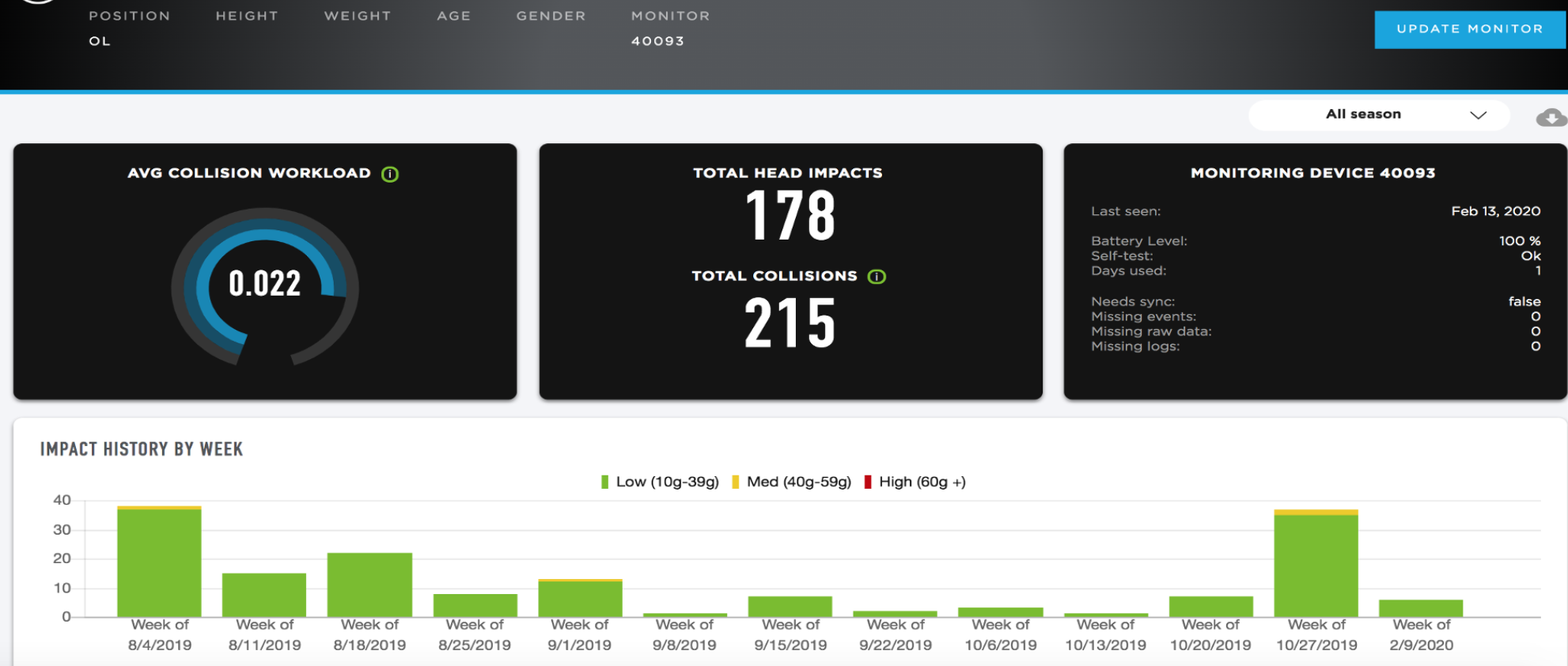Minneapolis, MN 9.3.2020
History of Offensive & Defensive Linemen Performance Monitoring
Offensive and defensive linemen have been historically difficult to monitor in the sports performance world. While these athletes are often the differentiating factor between being a good and great team, their unique physical movements have proven challenging to quantify with traditional wearable data. Although the performance of “high mileage” skill position athletes (particularly wide receivers & defensive backs) can be effectively measured through the use of GPS devices that track distance covered, acceleration/deceleration, top speed, etc., this data fails to accurately portray the exertion linemen are under during practice & game competition. On the majority of plays from scrimmage, offensive & defensive linemen compete within a 3-5 yard space, resulting in minimal distance covered, low top speeds, and minuscule accelerations/decelerations. These factors make it incredibly challenging to utilize traditional player workload metrics to outline the exertion of linemen.
Past Systems Challenges
GPS data providers have attempted to solve this player loading challenge with high contact athletes by capturing collision data using accelerometers placed on the athlete’s scapula or shoulder pads. These systems struggle to differentiate collisions from other movements like running, jumping, starting, and stopping. Accelerometers not tightly anchored to the body frequently move independently of the body during physical activity.
Why Accuracy Matters
The ability to collect accurate collision data is key to better understanding the workload of offensive & defensive linemen. The accuracy of wearables in measuring collisions is directly related to how tightly coupled the system is to the body. A key advantage for the Prevent Biometrics Impact Monitoring Mouthguard system (IMM) is the mouthguard’s tight coupling to the teeth. When the head moves during an impact to the body or head, the mouthguard moves with the head. As a result, the IMM system accurately measures direct blows to the head as well as body collisions on any given play.
Utilizing Prevent Collision Workload
Prevent’s collision workload metric has proven to be a key indicator of the energy a lineman exerts throughout a given day of work. The collision workload calculation acts on the number, magnitude, and location of collisions throughout the duration of a practice/game, clearly detailing the player loading for each athlete. As data is collected over the course of time, collision workload baselines are developed. This allows performance and medical staff to quickly identify high-intensity workdays for all athletes and adjust recovery and future practice schedules as needed.


